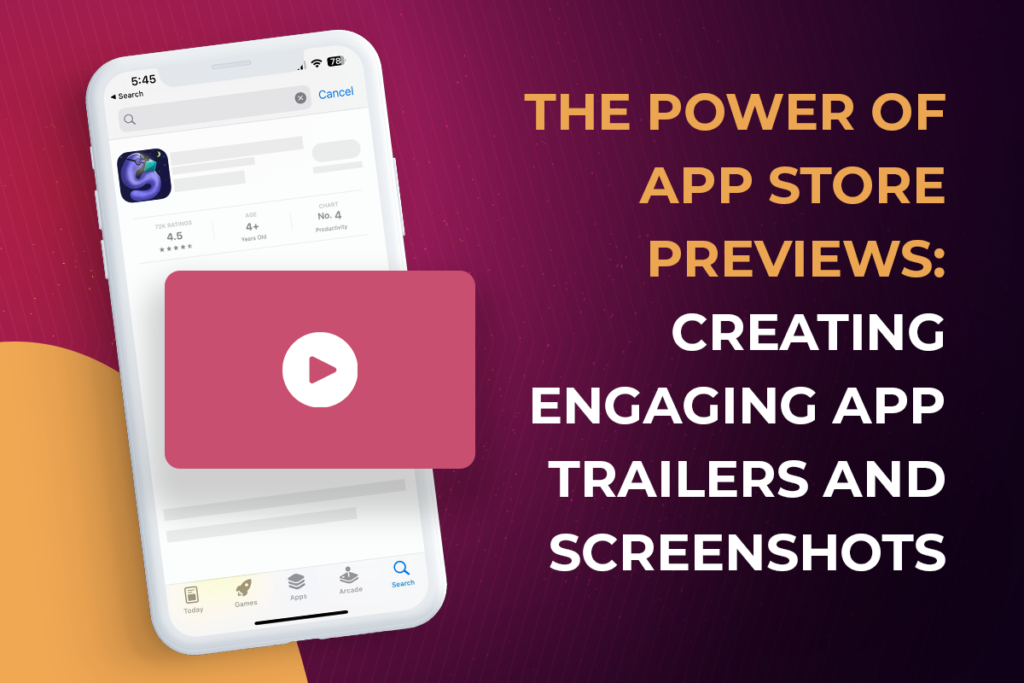
The Power of App Store Previews: Creating Engaging App Trailers and Screenshots
In today’s ever-evolving and fiercely competitive app ecosystem, the significance of making a strong first impression cannot be overstated. With app stores teeming with a plethora of options, it has become increasingly challenging for any single app to capture the attention of potential users. Understanding the crucial role of app store previews, including engaging app trailers and captivating screenshots, is imperative in the pursuit of not only grabbing users’ attention but also compelling them to select your app from the array of available choices.
This comprehensive guide serves as a valuable resource to unveil the intricate dynamics behind the effectiveness of app store previews in transforming potential users into loyal customers. Throughout this exploration, we will delve deeply into the profound impact of visual elements on app conversions, shedding light on how meticulously curated visuals can sway user decision-making in favor of your app. Additionally, we will uncover the art of skillfully crafting app trailers, complete with insights into developing compelling narratives and utilizing cinematic techniques to create an immersive and memorable experience for potential users.
Moreover, we will provide a comprehensive analysis of the pivotal role of A/B testing in optimizing app store previews. By dissecting the significance of A/B testing in the context of visual elements, we will uncover how meticulous analysis of user behavior and feedback can be leveraged to refine and enhance app store previews. This guide is dedicated to empowering app developers and marketers with the knowledge and tools required to create compelling app trailers and screenshots that are tailored to engage and entice users, ultimately leading to increased conversions and app success.
Section 1: The Impact of Visuals on App Conversions
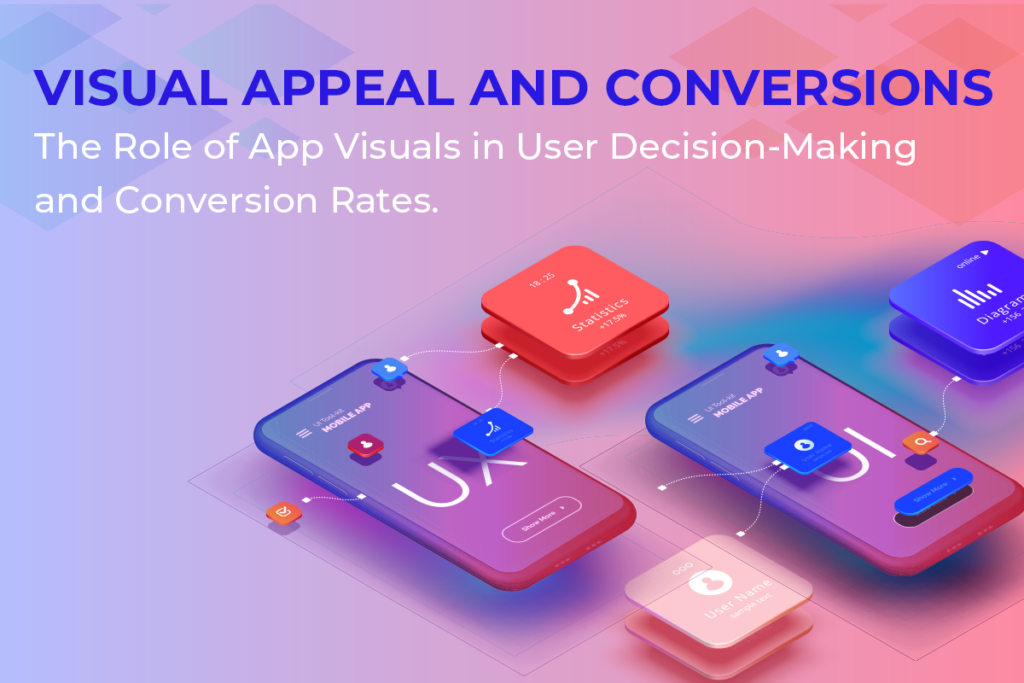
We will unravel the profound influence of visuals on the decision-making process of potential users, shedding light on the direct correlation between compelling app visuals and conversion rates. To comprehend the true potential of these elements, we must explore two key subtopics: the role of app visuals in user decision-making and the impact of visual elements on conversion rates.
1.1 Visual Appeal and Conversions
Captivating the attention of potential users in the bustling digital marketplace hinges on the visual appeal of your app store presence. Engaging and compelling app visuals play a pivotal role in users’ decision-making processes. Leveraging well-crafted app store previews, which include striking app trailers and enticing screenshots, can significantly impact users’ initial impressions and drive them towards the desired action – be it downloading, purchasing, or further exploration.
The Role of App Visuals in User Decision-Making
The initial interaction between a user and your app store page is often defined by the visual elements presented to them. Consider this moment as a first impression – a make-or-break encounter that significantly shapes the user’s perception of your app. The role of app visuals in user decision-making is multifaceted, as it serves various purposes:
- Cognitive Attraction: Users are drawn to images and videos more than textual descriptions. Engaging visuals capture users’ attention and stimulate their cognitive response.
- User Expectations: App visuals provide users with an insight into what they can expect from your app. By conveying key features, functionalities, and the overall look and feel of the app, visuals help manage user expectations.
- Aesthetic Appeal: The aesthetics of app visuals can influence a user’s emotional response. A well-designed app store page can evoke positive emotions, which play a crucial role in the decision-making process.
- Communicating Value: Effective visuals can convey the unique value proposition of your app. They enable users to quickly grasp what sets your app apart from the competition.
The impact of visuals on user decision-making extends far beyond merely capturing attention; it also plays a pivotal role in building trust and piquing users’ curiosity.
Conversion Rates and Visual Elements
Now that we have established the significance of visuals in capturing users’ attention and shaping their initial impression, it is imperative to investigate how these visual elements directly affect conversion rates. Conversion rates, in the context of app store previews, refer to the number of users who download or engage with your app after viewing your app store page.
- Higher Download Rates: Engaging visuals, such as well-designed screenshots and enticing app trailers, lead to a higher likelihood of users downloading your app. When users are visually enticed, they are more inclined to take the next step and install your app.
- Extended User Engagement: Compelling visuals play a pivotal role in extending user engagement. Users who are captivated by the visuals are more likely to explore your app further, engage with its features, and ultimately become long-term users.
- Reduced Bounce Rates: Bounce rates refer to the percentage of users who exit your app store page without taking any action. Visual elements that capture attention and provide meaningful information can reduce bounce rates and encourage users to stay on your app store page longer.
- Enhanced Click-Through Rates: Visual elements such as well-designed app screenshots and app trailers can lead to higher click-through rates. Users who are intrigued by the visuals are more likely to explore your app’s features and functionalities by clicking through the provided images and videos.
In essence, the presence of captivating visuals in your app store previews significantly contributes to higher conversion rates, which, in turn, translate into a more successful and thriving app. Understanding this impact sets the stage for our exploration of how to create compelling app trailers and screenshots that cater to users’ expectations and entice them to take action.
Section 2: Creating Compelling App Trailers
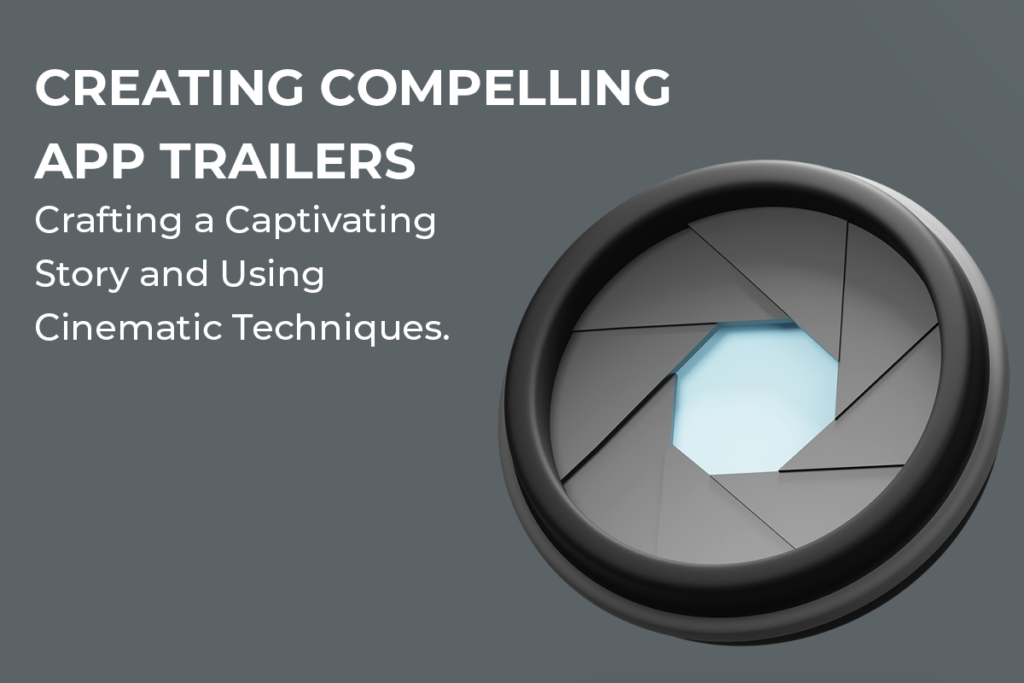
Now that we have explored the impact of visuals on app conversions, let’s delve into the art of creating captivating app trailers. This section focuses on two pivotal aspects of crafting app trailers: the importance of storytelling and cinematic techniques for app trailers.
2.1 The Art of App Trailers
We will delve deeper into the art of crafting compelling app trailers, which serve as powerful tools for attracting and engaging potential users. To optimize your app’s success, it’s crucial to understand the intricacies of creating a captivating app trailer.
Crafting a Captivating Story
- Defining the Narrative: A successful app trailer begins with a well-defined narrative. It should encapsulate the essence of your app and the problem it aims to solve. Consider it as a mini-movie with a clear beginning, middle, and end.
- Emotional Engagement: Effective storytelling for app trailers should resonate emotionally with your audience. This emotional connection can be achieved through compelling narratives, relatable characters, or by showcasing real-life scenarios where users benefit from your app.
- Authentic User Experience: It’s essential to offer a glimpse of the actual user experience. The scenes in your app trailer should reflect real-life interactions with your app, demonstrating its value authentically. Authenticity builds trust.
- Highlighting Key Features: While crafting your narrative, ensure that the key features of your app are prominently featured. These features should directly relate to the issues your app resolves and the benefits it offers to users.
- Call to Action: Conclude your app trailer with a clear and compelling call to action. This should prompt viewers to take immediate steps, such as downloading the app, visiting your website, or signing up for more information.
Cinematic Techniques for App Trailers
- Visual Appeal: Engaging visuals are the backbone of a successful app trailer. Invest in high-quality video production, sharp graphics, and professional editing. The visuals should be visually striking and crisp.
- Sound and Music: Don’t underestimate the role of sound design and music in your app trailer. The right soundtrack can elicit emotions and enhance the viewing experience, making it more memorable.
- Editing and Pacing: Effective editing is key to maintaining viewer engagement. Keep the pacing consistent and avoid extended sequences that might lead to disinterest. Use editing to build anticipation and maintain intrigue.
- Text and Titles: Overlay text and titles thoughtfully throughout the trailer. They should reinforce the narrative and highlight essential features or benefits of your app. Ensure that text is easily readable.
- Voiceovers and Narration: If your app trailer includes a voiceover, choose a narrator whose voice aligns with the trailer’s tone and message. The narration should be clear and articulate, enhancing the storytelling.
- Testimonials and Social Proof: The inclusion of user testimonials or social proof in your app trailer can add authenticity and credibility. Real people sharing their positive experiences can significantly impact potential users.
Crafting a captivating app trailer involves a meticulous blend of art and marketing. You must have a deep understanding of your app’s value proposition, employ a creative storytelling approach, and utilize cinematic techniques to engage and enthrall your audience. By mastering these elements, your app trailer can effectively showcase your app’s unique selling points, invoke curiosity, and ultimately drive users to take action.
2.2 Optimizing App Trailer Distribution
Once you’ve created a captivating app trailer, it’s vital to ensure that it reaches your target audience effectively. In this section, we’ll delve into strategies for optimizing the distribution of your app trailer, ensuring it garners the attention it deserves both within and beyond the app store.
App Store and Beyond
- Leverage the App Store: The app store itself is the primary platform for your app trailer. Your trailer should be prominently featured on your app’s page, near the top, where it’s easily visible to visitors. It should provide users with a quick preview of your app’s capabilities and benefits.
- Optimize for Search: Make sure your app trailer is optimized for app store search. Use relevant keywords in the video title and description to enhance its discoverability. This will enable users searching for apps in your niche to find your trailer more easily.
- Localization: If your app has a global audience, consider localizing your trailer by adding subtitles or dubbing to cater to different languages. This can significantly expand your app’s reach and appeal to a broader audience.
- Featured Sections: The app store often has featured sections where they highlight top apps. Try to get your trailer featured in such sections, as this can boost visibility significantly.
- Engaging Thumbnail: The thumbnail of your app trailer should be visually engaging and reflective of your app’s content. A compelling thumbnail can entice users to click and view the trailer.
- Regular Updates: Keep your app trailer updated, especially when you release new features or updates for your app. An outdated trailer may mislead potential users or fail to showcase the latest and greatest aspects of your app.
Social Media and Teasers
- Social Media Promotion: Share your app trailer on your app’s social media channels. Platforms like Facebook, Twitter, Instagram, and LinkedIn are excellent for reaching a broader audience. Use catchy captions and hashtags to generate buzz.
- Teasers and Snippets: Alongside your full app trailer, consider creating shorter teaser videos or snippets to share on social media. These can provide quick highlights and pique curiosity, encouraging viewers to watch the full trailer.
- Influencer Collaborations: Partner with social media influencers or app review sites to promote your app trailer. Influencers can reach a large and engaged audience, providing credibility and trust to your app.
- YouTube and Video Platforms: Upload your app trailer to YouTube and other video-sharing platforms. YouTube, in particular, is a powerful tool for reaching a vast audience. Optimize your video’s title, description, and tags for better search visibility.
- Paid Advertising: Consider investing in paid advertising on social media and video platforms. Platforms like Facebook and YouTube offer robust ad targeting options, enabling you to reach users interested in apps like yours.
- Email Marketing: If you have an email subscriber list, send your app trailer to your subscribers. Email marketing can be an effective way to reach a targeted audience that has already expressed interest in your app.
- App Review Sites: Reach out to app review sites and request them to feature your app trailer. Many users visit these sites for app recommendations and reviews.
Optimizing app trailer distribution involves a comprehensive approach to ensure that your carefully crafted trailer reaches your target audience. By making the most of the app store, utilizing social media and other promotional platforms, and collaborating with influencers and review sites, you can effectively showcase your app and generate interest among potential users. The next section will delve into the creation of engaging screenshots, which complement your app trailer to provide users with a comprehensive view of your app.
Section 3: Crafting Engaging Screenshots
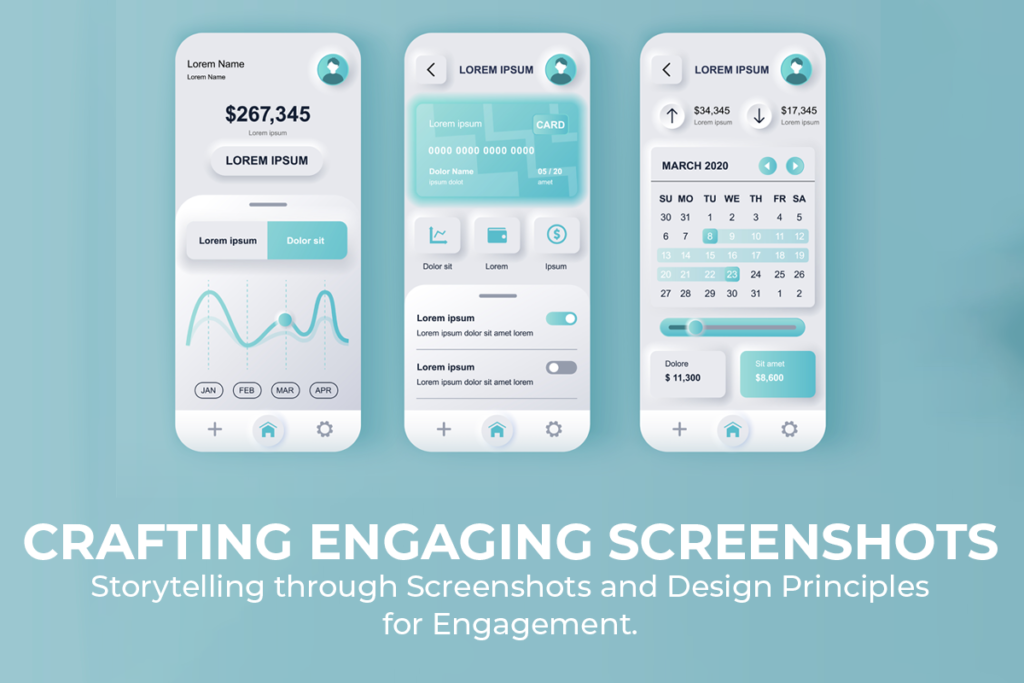
The significance of app screenshots and how they play a crucial role in attracting users. Well-designed and compelling screenshots offer users a visual preview of what your app offers, and when done right, they can significantly influence download decisions.
3.1 The Role of App Screenshots
App screenshots are often the first visual elements that users encounter when exploring your app’s store page. This section will focus on understanding the significance of screenshots in engaging users and driving downloads.
Storytelling through Screenshots
- Narrative Flow: Consider structuring your screenshots to tell a story. Begin with an image that highlights the main problem your app solves, followed by screenshots that depict the app’s features and benefits. Conclude with a captivating call-to-action.
- Feature Highlights: Each screenshot should emphasize a particular feature or benefit. Use captions or annotations to provide context and guide users through your app’s functionalities.
- User Scenarios: Showcase different scenarios or use cases through your screenshots. For instance, if your app is a fitness tracker, include images of users working out, monitoring their progress, and achieving fitness goals.
- Consistent Design: Maintain a consistent design theme throughout your screenshots. This helps in creating a cohesive and professional appearance, reflecting positively on your app.
- Emphasize Uniqueness: Highlight what sets your app apart from competitors. If you have a unique feature or an exceptional user interface, make sure it’s prominently displayed in your screenshots.
Design Principles for Screenshot Engagement
- Clarity and Visibility: Ensure that all elements in your screenshots are clear and easily visible, even when viewed on smaller screens. Avoid clutter and overcrowding.
- Captivating Visuals: Use high-quality images and graphics that are visually appealing. Crisp, well-composed screenshots are more likely to grab attention.
- Device Framing: Frame your screenshots within the context of a device, like a smartphone or tablet. This helps users envision how your app will look on their own devices.
- Callouts and Text: Use callouts or text overlays sparingly to draw attention to key features or benefits. This can enhance user understanding and engagement.
- Screenshots Order: Place your most compelling and important screenshots at the beginning. The first few screenshots should provide a strong incentive for users to explore further.
- Test Different Variations: A/B testing your screenshots is a valuable practice. Experiment with different designs, captions, or order to determine which combination yields the best results.
- Device Specificity: Tailor screenshots for different devices. Ensure that the screenshots display optimally on various screen sizes and orientations.
- Localization: If your app caters to a global audience, consider providing localized screenshots. This can help users from different regions feel more connected to your app.
Creating engaging screenshots is not just about displaying your app’s interface but also about telling a visual story that resonates with users. Through thoughtful design and an emphasis on unique features and benefits, your app’s screenshots can serve as compelling marketing tools. The next section will delve into the importance of A/B testing to optimize your visual elements for maximum impact and user engagement.
Section 4: The Science of A/B Testing
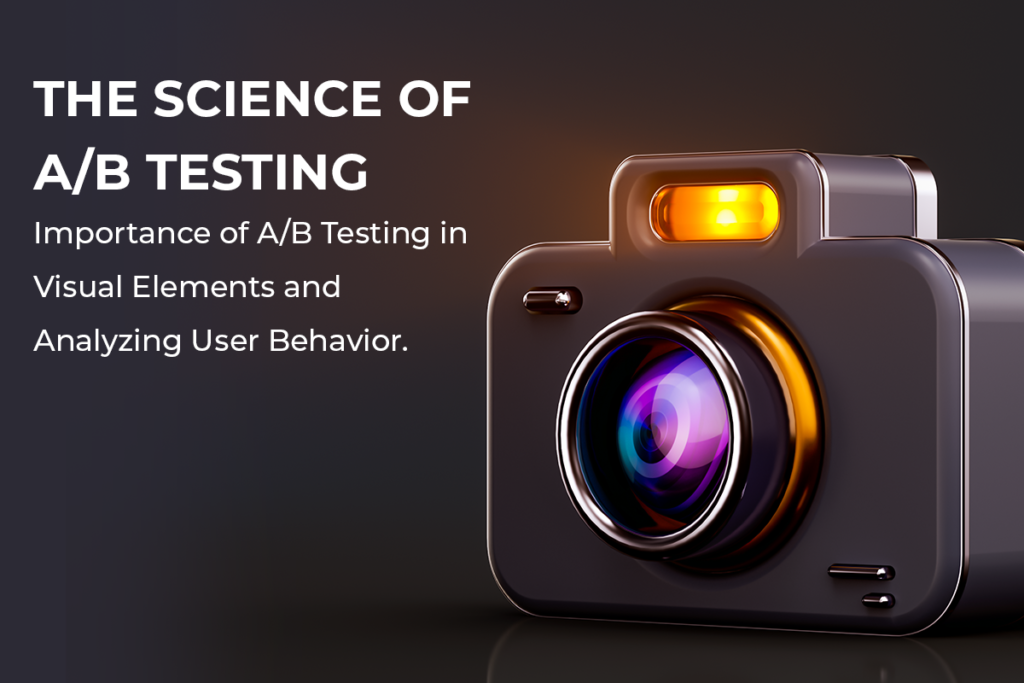
Explore the methodology of A/B testing and how it can be applied to optimize your app store previews, including trailers and screenshots. A/B testing is a systematic way of comparing two or more variations of a marketing element, such as visuals, to determine which one performs better in achieving specific goals. For app marketers, A/B testing is an invaluable tool for refining the visual elements used in app store previews.
4.1 A/B Testing and Optimization
The Importance of A/B Testing in Visual Elements
A/B testing, also known as split testing, is a data-driven technique that is integral to the process of optimizing your app store previews, which include trailers and screenshots. This method systematically compares two or more variations of visual elements to identify which one resonates better with your target audience. In the context of app marketing, A/B testing is indispensable for the following reasons:
- Data-Driven Decisions: A/B testing is a powerful tool for substantiating decisions with empirical evidence rather than relying on assumptions or personal preferences. When it comes to app store previews, it provides concrete insights into what works best.
- Iterative Improvement: A/B testing is particularly valuable because app marketing is an ongoing endeavor. It enables you to continuously enhance your app’s visual assets, often through small, incremental changes that can collectively lead to significant improvements.
- Optimizing Conversions: A/B testing is the linchpin for understanding which visuals are most effective in convincing users to download or engage with your app. Whether it’s a trailer or a screenshot, A/B testing helps decipher what precisely drives conversions.
- Risk Mitigation: Instead of introducing significant and potentially risky changes to your app’s visuals, A/B testing allows you to experiment with variations on a smaller scale. This minimizes the risk of negatively impacting user engagement.
- User-Centered Design: A/B testing fosters a user-centric approach. It aligns your visuals with what resonates most with your target audience, thereby resulting in higher user engagement and, consequently, improved conversion rates.
Analyzing User Behavior and Feedback
Executing a successful A/B test isn’t just about creating variations and measuring results; it involves a thorough process of analysis and interpretation. Here’s how you can go about it:
- Clear Objective Setting: Commence your A/B test by defining precise objectives. What specific goals are you trying to achieve? Whether it’s increased downloads, enhanced user engagement, or improved conversion rates, having well-defined objectives is paramount.
- Randomized Testing: The key to credible A/B testing is the random assignment of users to different variations. This ensures that the results are not skewed by external factors like user demographics or behavior.
- Statistical Significance: Continue data analysis until you achieve statistical significance. This essentially means collecting enough data to be confident that observed differences are not mere coincidences or random fluctuations.
- User Behavior Insights: Besides quantitative data, consider the qualitative aspect as well. Solicit user feedback to understand why specific variations perform better. This qualitative input can provide valuable insights to guide further optimization.
- Iterative Approach: A/B testing isn’t a one-time affair. Even if you discover a winning variation, it’s vital to continue testing to identify potential improvements. App marketing is a dynamic field, and user preferences can evolve.
- Hypothesis-Driven Testing: Before you initiate A/B tests, formulate hypotheses regarding which variations might perform better. This ensures that your testing efforts are purposeful and goal-oriented.
- Data Visualization: Make use of visual representations such as graphs and charts to gain a clearer understanding of your data. Visualization can reveal patterns and trends that may not be as apparent in raw numerical data.
A/B testing is a dynamic process that can significantly impact your app’s success. Whether you’re fine-tuning your app trailer, optimizing screenshots, or even experimenting with icon design, A/B testing is a method that allows you to make data-driven decisions and keep your visuals aligned with user preferences. The next section will summarize the key takeaways from this article, emphasizing the pivotal role of app store previews and the potential they hold for driving user engagement and app success.
Conclusion
In a rapidly evolving app market where competition is fierce, the role of app store previews – encompassing both captivating trailers and engaging screenshots – cannot be overstated. As the digital face of your app, these visual elements are your primary tools to attract and retain users. The impact they have on users’ decisions, whether to download or engage with your app, is profound.
The key takeaways from this article underscore the critical importance of visually appealing content:
Visual Appeal Drives Conversions: The visual elements of your app profoundly influence users’ decisions. Whether it’s the storytelling prowess of your app trailer or the design aesthetics of your screenshots, these factors significantly impact conversion rates.
Storytelling Matters: Crafting a captivating narrative in your app trailer is a surefire way to pique users’ interest. The ability to tell a compelling story, highlight your app’s unique features, and demonstrate its value can be the difference between attracting or losing a user.
A/B Testing for Optimization: A/B testing is your guiding light for optimizing your visual elements. It allows you to take a data-driven approach to visual optimization, minimizing risks, and ensuring that your app previews align with user preferences.
User-Centric Approach: In a user-centric world, app marketing success is rooted in aligning your visuals with what resonates most with your audience. By continually monitoring user behavior, gathering feedback, and iterating your visual elements, you ensure your visuals remain in sync with evolving user preferences.
In closing, the power of app store previews is not to be underestimated. They are the first impression, the initial glimpse that potential users have of your app. A well-crafted app trailer and appealing screenshots can entice users, and data-driven optimization through A/B testing can ensure your visuals remain effective in the face of changing user behaviors and preferences.
As you embark on your app marketing journey, remember that the success of your app largely depends on the visuals you present. The combination of a compelling story, a visually appealing design, and data-driven optimization can set you on the path to app success. The significance of these elements is not to be taken lightly, and they have the potential to transform your app from a mere offering to an engaging and sought-after experience.
In an app market that’s teeming with competition, never underestimate the power of compelling app store previews. They have the potential to turn curious onlookers into loyal users and, ultimately, drive the success of your app.
Please feel free to Contact Us in case you need any guidance regarding your app marketing needs.
FAQ
How can app developers create effective app trailers on a budget?
Creating effective app trailers on a budget is achievable with the right approach. You can consider the following strategies:
- DIY Trailers: Use free or low-cost video editing software to create trailers. Ensure they convey the essence of your app effectively.
- User-Generated Content: Encourage users to create app-related content, such as tutorials or testimonials, which can serve as engaging trailers.
- Leverage Templates: Explore affordable video templates that can be customized to fit your app’s unique selling points.
Are there specialized tools for designing engaging app screenshots?
Yes, there are several tools available to help design engaging app screenshots. Some popular options include:
- Canva: A user-friendly design tool with templates for creating beautiful screenshots.
- App Store Screenshot Generators: Platforms like Previewed offer templates and tools tailored to app screenshot creation.
- Graphic Design Software: Professional software like Adobe Photoshop or Illustrator for more advanced users.
What are common mistakes to avoid when creating app trailers?
When creating app trailers, avoid these common pitfalls:
- Overloading with Information: Don’t overwhelm users with too much information; keep the trailer concise.
- Ignoring Storytelling: Failing to tell a compelling story can make your trailer less engaging.
- Neglecting Sound Quality: Poor audio quality can deter users, so ensure clear sound.
How do app marketers balance creativity and accuracy in app screenshots?
Balancing creativity and accuracy in app screenshots is essential. To achieve this balance, consider these tips:
- Prioritize Key Features: Highlight key features while maintaining a creative design.
- Emphasize Benefits: Showcase how your app benefits users while being creative in your presentation.
- Maintain Consistency: Ensure that the screenshot design and content align with your brand’s style.
What impact do app previews have on user engagement and retention?
App previews, including trailers and screenshots, have a significant impact on user engagement and retention. Engaging and informative previews can attract users to download and explore your app. Well-optimized visuals can increase user engagement, leading to better retention rates as users find value and satisfaction in your app.
Can A/B testing be done for all app visual elements?
A/B testing can be applied to various app visual elements, including app trailers, screenshots, icons, and app store descriptions. Testing these elements allows you to fine-tune your presentation to maximize user engagement and conversions. However, the specific elements to test may vary based on your app and user base.
Are there legal considerations in using certain visual elements in app trailers and screenshots?
Yes, there can be legal considerations when using visual elements. It’s crucial to ensure that you have the necessary rights and permissions to use any copyrighted content, including images, music, or trademarks. Additionally, be cautious when using user-generated content to avoid potential copyright issues.
How often should app developers update their app previews for better conversions?
Regularly updating app previews is essential to keep them relevant and engaging. Aim to refresh your app previews whenever you release significant updates, add new features, or when you notice a drop in conversions. Staying up to date with design trends can also be a good reason to update your previews.
Can app store previews help apps compete in saturated markets?
Absolutely, compelling app store previews are a competitive advantage in saturated markets. They are your opportunity to stand out and attract users in a crowded landscape. Engaging trailers and screenshots can make users choose your app over others.
What are the best practices for optimizing app store previews for different app stores?
Optimizing app store previews involves tailoring them to the guidelines and requirements of different app stores. Some best practices include:
- Reviewing and adhering to each app store’s specifications for trailers and screenshots.
- Testing different variations to find what resonates with your specific audience on each platform.
- Keeping your previews up-to-date as store requirements or user preferences change.




0